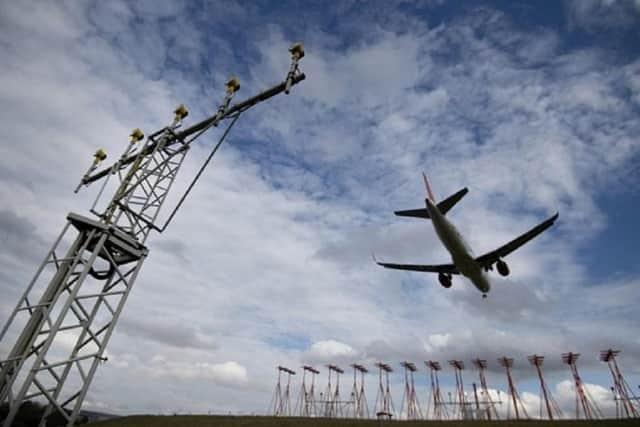New arrival route chosen into Luton Airport after consultation
and live on Freeview channel 276
London Luton Airport (LLA) and air traffic control provider NATS have reviewed feedback from more than 2,400 respondents.
It has been decided to progress Option One, which focuses on higher altitude flights above 5,000ft, using the latest air navigation technology.
Advertisement
Advertisement
Luton Airport currently shares arrival routes and two holds with Stansted, a situation which has been described as "unsustainable" due to both airports' size.


A new aircraft hold is planned in the St Neots and Huntingdon area, to ensure routes don't clash with Stansted.
Under option one, more flights are expected to extend over the Biggleswade and Potton areas - attracting criticism from a local councillor.
Luton Airport says that as a result of the consultation, the location of the new hold has been adjusted and the lowest standard altitude of the hold raised by 1,000ft - reducing potential noise for the residents of St Neots and Huntingdon.
Advertisement
Advertisement
Lee Boulton, head of airspace development for NATS, said: “We listened carefully from the start of the consultation to the feedback we were getting, and provided more information as we went along, particularly on the hold and why we need it.
"I sincerely hope that people will see our genuine effort to respond to their concerns and I believe the adjustments we are making will make a real and positive difference.
“It was clear from the outset that people’s two main concerns were around the need for, and position of, the new hold; and their preference for dispersion of flights under Option One, rather than our preference for Option Two, which offered the very accurate use of two alternating routes.
"In responding to those, other more indirect concerns have also been addressed, as we set out last week in the feedback report.”
Advertisement
Advertisement
The final design will now be submitted for approval to the Civil Aviation Authority (CAA) in line with the airspace change process. Subject to CAA regulatory approval, the proposal would come into effect no earlier than February 2022.
To follow the latest progress of the plans, visit here.